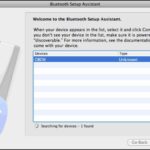The OBDII trouble code P0315 indicates a problem with the crankshaft position system variation not being learned. This code applies to most fuel-injected vehicles manufactured since 2003, including Dodge, Chrysler, Ford, Jeep, Mazda, Mitsubishi, Kia, Isuzu, and Hyundai. Understanding this code is crucial for effective diagnosis and repair.
What Does the P0315 Code Mean?
The P0315 code signifies a discrepancy between the crankshaft position sensor (CPS) and the engine control module (ECM) or powertrain control module (PCM). The PCM monitors variations in the crankshaft’s position relative to reference points and compares these measurements to stored ideal values. If the variation exceeds a pre-defined threshold, the P0315 code is triggered. This often points to an electrical fault, but mechanical issues can also contribute.
Symptoms of a P0315 Code
Recognizing the symptoms associated with a P0315 code can aid in early diagnosis. Common symptoms include:
- Illuminated Malfunction Indicator Lamp (MIL): The check engine light will turn on.
- Engine Misfire: The engine might misfire, causing bucking or surging sensations.
- Stalling: The engine may stall but could restart if the issue is intermittent.
- Starting Problems: The car might run fine until restarted, after which it may not start at all.
- Cranking Without Starting: The engine might crank but fail to start.
Common Causes of a P0315 Code
Several factors can trigger a P0315 code. The most common causes are:
-
Incomplete or Incorrect Crankshaft Position Relearn Procedure: This is often the primary culprit. After replacing certain components, a relearn procedure must be performed to synchronize the CPS with the PCM.
-
Worn Timing Components: Worn timing chains, gears, distributors, or even a damaged flexplate can disrupt the crankshaft’s position signals.
-
Faulty Crankshaft Position Sensor: The CPS itself can malfunction due to wear and tear or damage.
-
Open Circuits: Open circuits in the power, ground, or signal wires of the CPS can disrupt communication with the PCM.
-
Failed PCM: While less common, a faulty PCM can also be responsible for the P0315 code.
Diagnosing and Repairing a P0315 Code
Diagnosing a P0315 code requires a systematic approach:
-
Check for Technical Service Bulletins (TSBs): Consult manufacturer TSBs for known issues and solutions related to the P0315 code for your specific vehicle.
-
Retrieve and Clear Codes: Use an OBDII scanner to retrieve all stored codes, including the P0315. Clear the codes and check if the P0315 returns.
-
Inspect Wiring and Connectors: Visually inspect the CPS wiring and connectors for damage, corrosion, or loose connections. Clean and repair as needed.
-
Inspect the Crankshaft Position Sensor: Remove the CPS and inspect it for physical damage. Examine the area where the sensor interacts with the engine for any signs of interference. Consider using an OEM replacement sensor.
-
Check Timing Components: With the CPS removed, manually rotate the engine and inspect the timing components for wear, damage, or excessive slack.
-
Perform Crankshaft Position Relearn: If the scanner supports it, perform a crankshaft position relearn procedure after clearing all codes. Ensure all codes are cleared before attempting the relearn.
-
Seek Professional Help: If the issue persists, consult a qualified automotive diagnostician for further assistance.
Conclusion
The Obdii P0315 code signifies a problem with the crankshaft position system. Addressing this issue promptly is crucial for proper engine function. By understanding the causes, symptoms, and diagnostic steps, you can effectively troubleshoot and resolve the P0315 code, ensuring your vehicle’s smooth operation.

